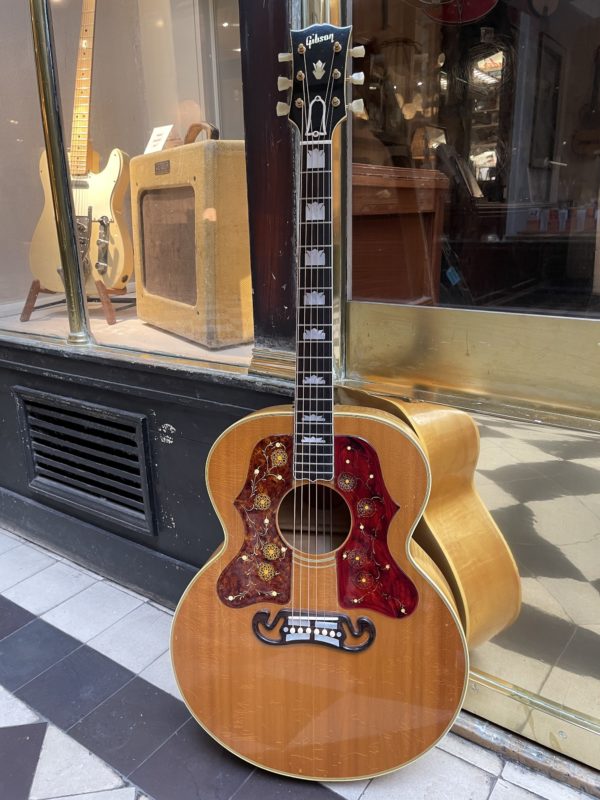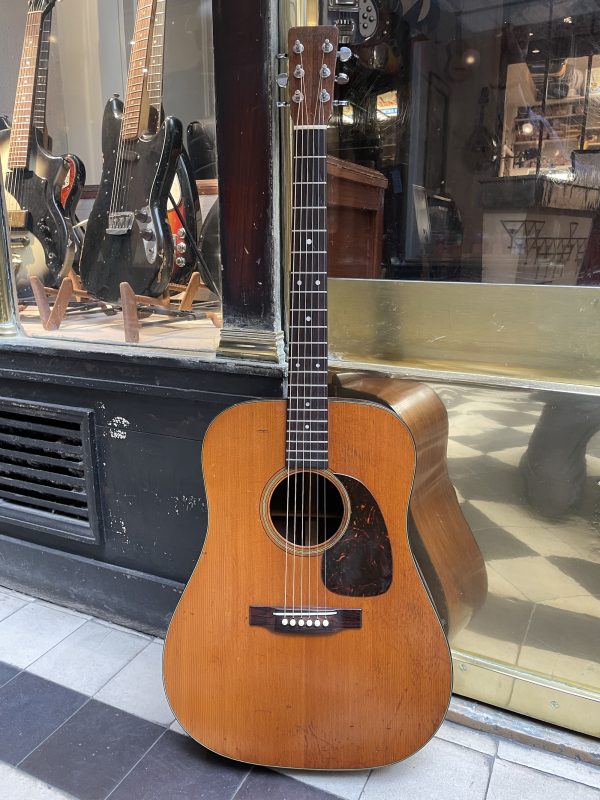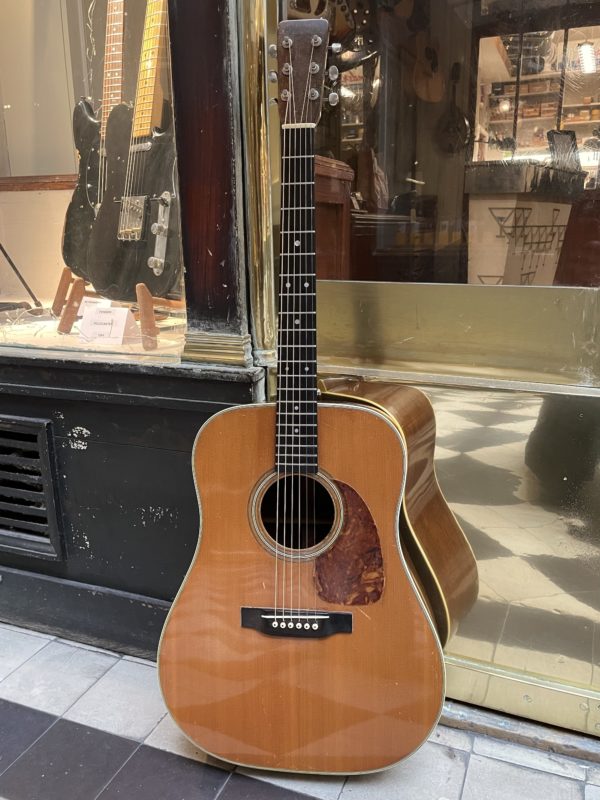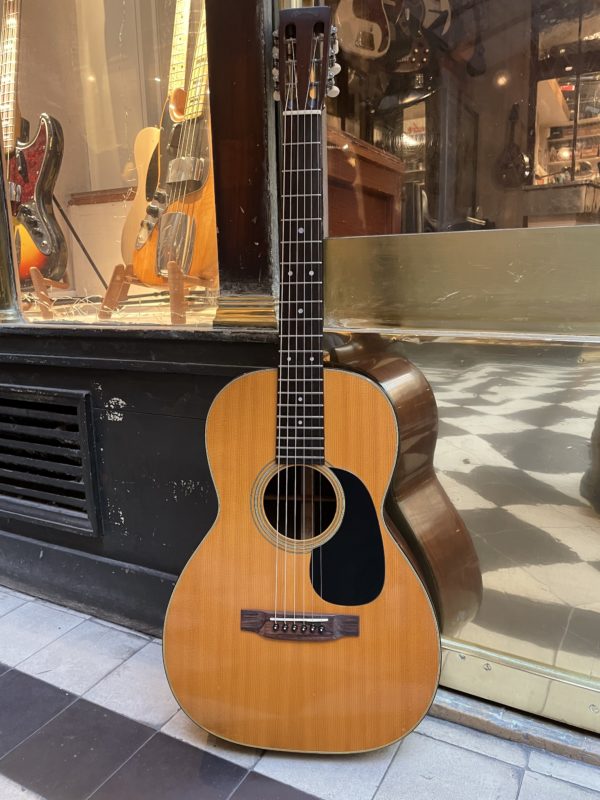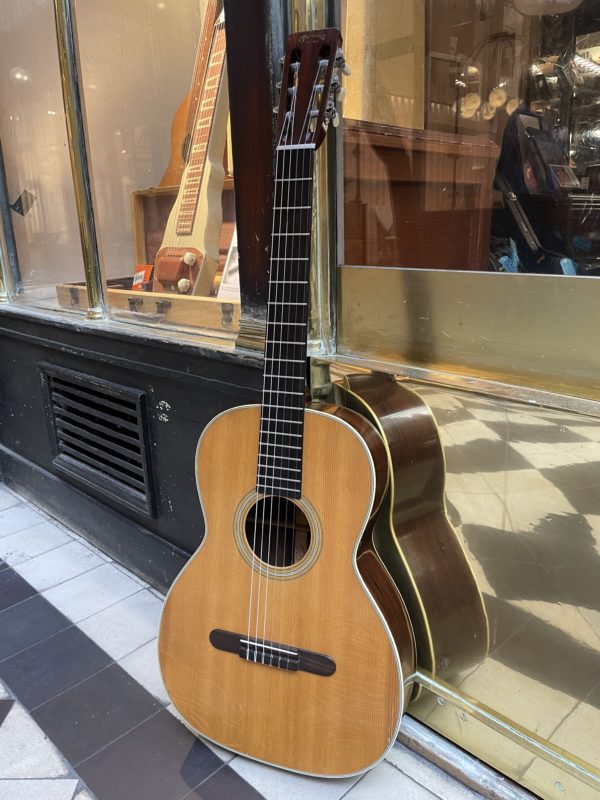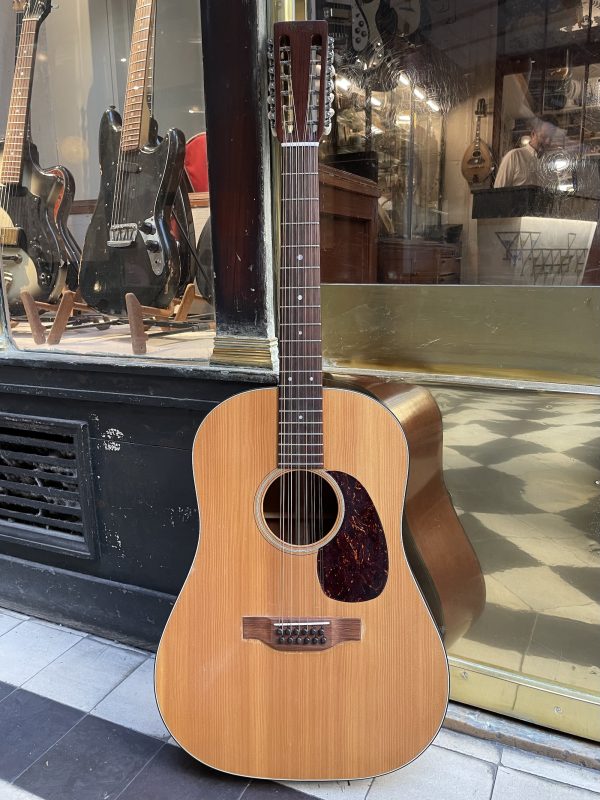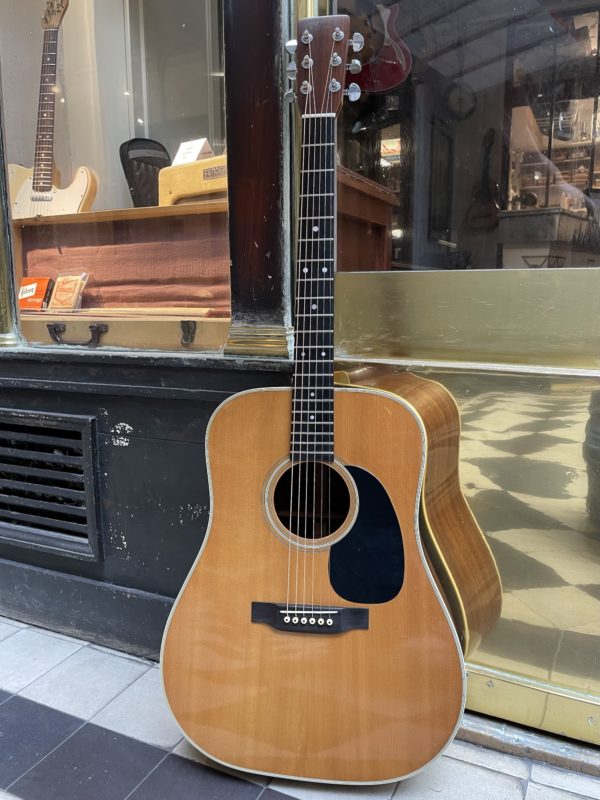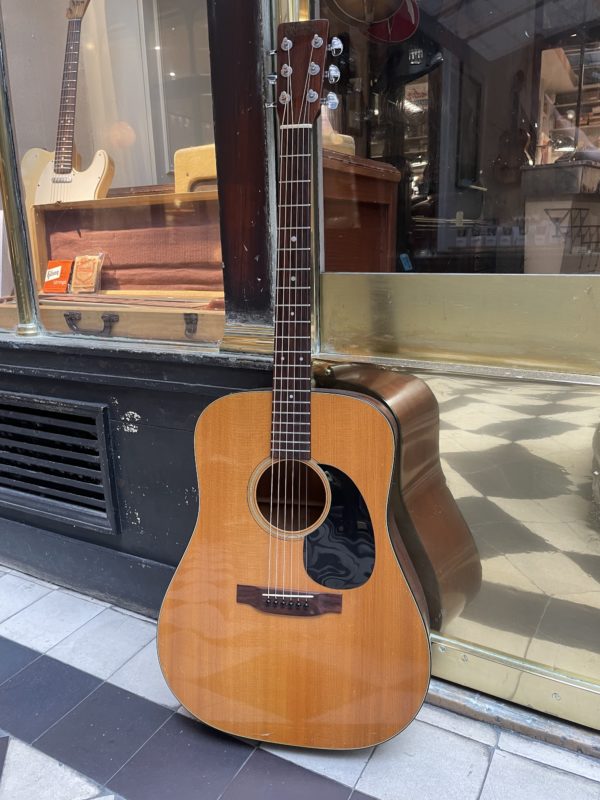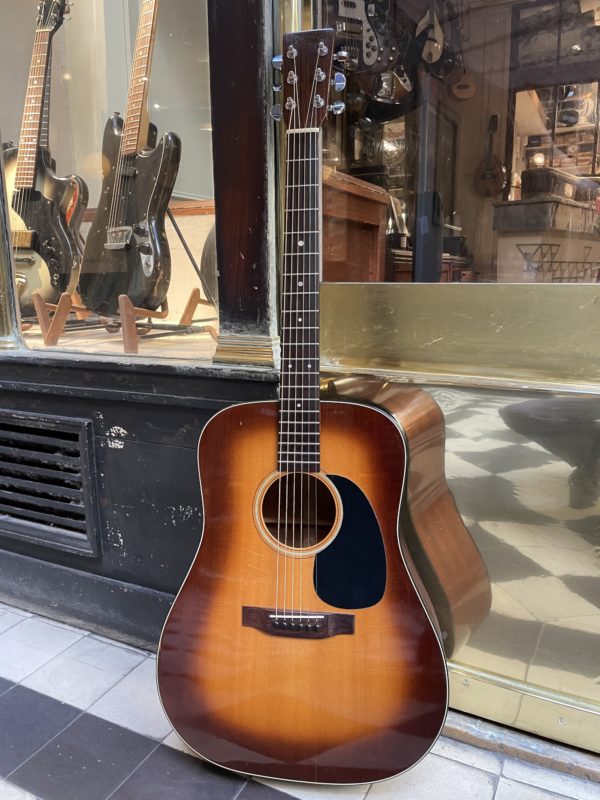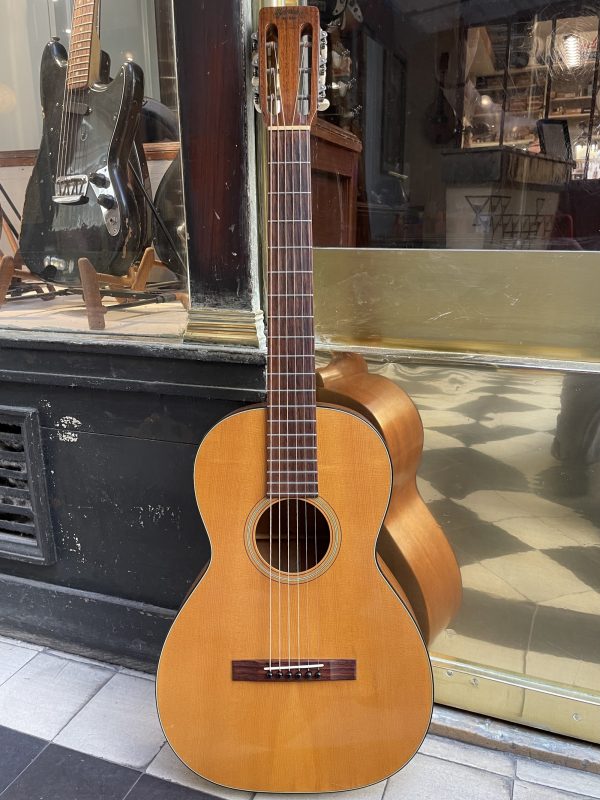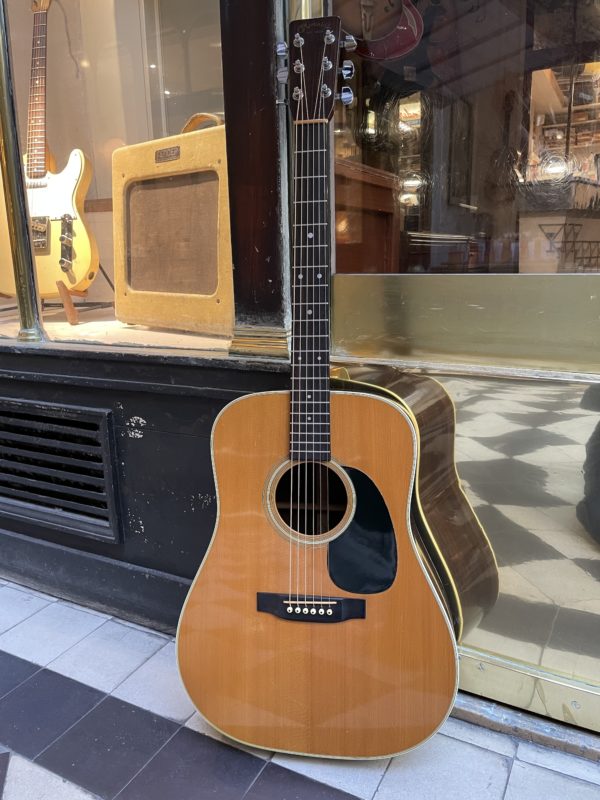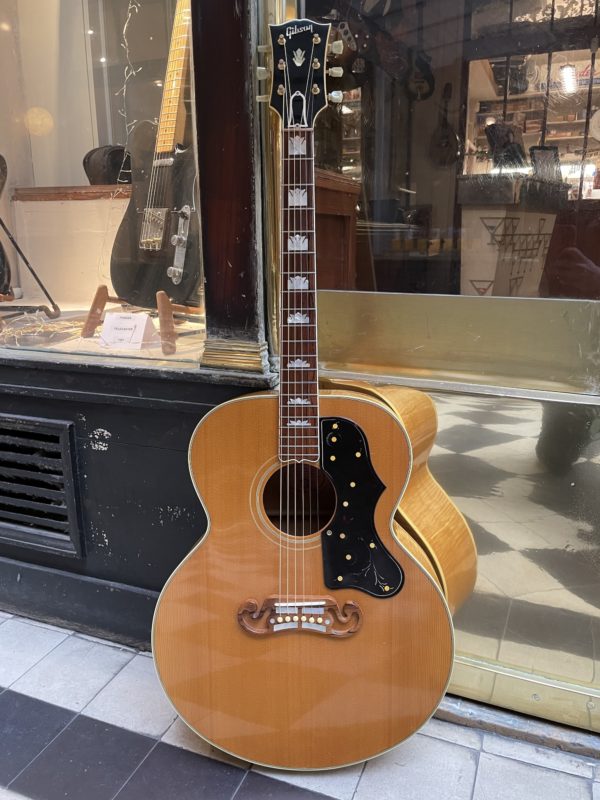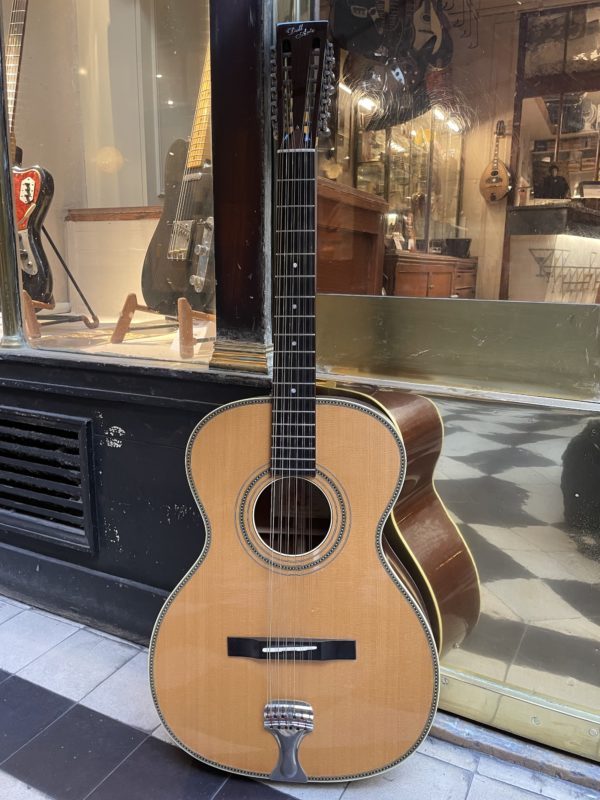Flat-Top
THE FLAT-TOP GUITAR
The English term “folk” may signify the folklore of any cultural or geographical origin, but in the global and collective imagination of North American folk music aficionados, the term has been essentialized to designate specifically Anglo-Saxon musical traditions stemming from the Old Continent which were carried over to the New World, where they have been developed, enriched, and persist on to this very day. This encapsulates everything from Irish, British, German or Dutch dances and songs. Nowadays, the term “flat-top guitar” naturally evokes a steel stringed instrument , as opposed to the classical guitar. An instrument found in the hands of every great player, from Hank Willian (1923-1953) to Joan Baez (1941-), which is typically described as a physically imposing guitar with an overpowering bass range, usually used to strum two or three basic chords while singing the stories and lives of those who play it. Often times, the folk guitar is reduced to the caricatural shape of a pear, not unlike the face of a descendant of the Habsburg dynasty, played by some wailing redneck dressed in an overly elaborate cowboy suit à-la Nudie Cohn (1902 – 1984) – who on a side note designed costumes for the rich and famous, including the King’s gold finished outfit -, or by some juvenile hippie plucking strings with a reefer between his lips while sitting on a scorched campus lawn or a Woodstock stage, looking for free love and full of social and political hope and idealism. An end in itself for many.
Naturally, the flat-top guitar has a much longer, deeper history, and much more musical richness than what transpires at first glance. If we go back to its very inception, the flat-top guitar owes apparently a lot to Mexican vaqueros who first imported steel strings to Texas to be used on guitars, instead of the gut strings typically used up until that point. This new material allowed for louder volume as well as a richer harmonic content. There was however one major pitfall – the increased tension of steel strings posed great issues regarding the structural integrity of the instrument they were mounted on, as these were not designed to withstand such force, thus resulting in severe warping of the top and neck. This is why for a long time guitar manufacturers would place warranty labels inside their instruments guaranteeing their absolute resistance to the passage of time, but not against the wreckage caused by steel strings, to paraphrase the writing found on late 19th century Washburn labels.
It is often said that Martin is the company that first started building flat-top guitars and steel string guitars. This is doubly incorrect, as Martin stands among the last American guitar builders to accept this radical change in guitar making in the early 1920s. Furthermore, the dreadnought shape, one of the most recognizable flat-top guitars ever to be built, although generally associated with Martin, actually stems from an original concept and drawings previously made by the Washburn guitar company. Old habits die hard, but thanks to Martin’s superior craftsmanship and ability to respond to a given period’s desires in terms of instrument making, they were in the end quickly able to take lead in the world of flat-top guitar making.
If we set aside a few outlying instruments designed to be used with steel strings at the very start of the 20th century, it is the 2-17 model, a small sized guitar somewhat reminiscent of romantic period instruments, available in the Martin catalogue starting in 1922, that takes the prize as Martin’s first serially produced guitar offering steel strings. There is a likely explanation to Martin’s long hesitation to enter the flat-top guitar making arena: in the same period, their attention was strongly focused on building mandolins, at a time where these instruments were taking the cultural scene by storm. Add to that Martin’s long standing engagement in the crafting of high-end gut-string guitars and their status as top dog of this industry, and we may begin to understand their lack of interest in venturing into the market of steel string guitars. However, this turned out to be an unfortunate intuition on their part, as the start of the 20th century would see the progressive disappearance of gut-string parlor style guitars as the musicians who played them shifted towards steel stringed instruments or the better established gut-stringed Spanish-style classical guitars. Finally, Frank Henry Martin (1868 – 1948), who is though to be the initiator of Martin’s Golden Age, is left with no alternative but to recognize the perspective offered by steel strings, and thus reorient his company’s production ethos to step in line with this new norm. This was an opportune decision, as it allowed Martin to capture the interest of Hawaiian music lovers at the moment where this style peaked in popularity, while also responding to increasingly pressing needs for louder sounding instruments, at a time where guitar players where growing in numbers due to the gradual loss of interest in banjos.
In any case, the heir of Christian Friedrich Martin (1796 – 1873) would prove his talent in a number of unexpected ways: the very first steel stringed models were identical in dimensions and concept to their gut-stringed counterparts, with the major difference being the use of the X-bracing, specifically developed to withstand the increased tension of steel strings, which although present on many older models was greatly improved for better resistance and sonic qualities and became a staple of the pre-war flat-top Martin guitar. From there onwards, this characteristic was applied to every major model appearing thereafter: Martin 0, Martin 00, Martin 000, Martin OM, dreadnought models Martin D-18, Martin D-28, Martin D-35, Martin D-41, Martin D-45. When one combines a solid work ethic, impeccable craftsmanship, a constant level of expectancy and a strong company culture preserved and heightened over the years with the major technological advances, most notably the X-bracing developed by C. F. Martin, we may just start grasping the secret recipe that has guaranteed Martin’s success over the decades and up until this very day.
Where the Gibson company is concerned, while it might be true that many of its concepts and creations were appropriated by other builders, the flat-top guitars it produced owe a lot to the concepts Martin pushed from the 30s to the 50s. The great influence the dreadnought format had on the public led Gibson to look into its own design that would allow it to compete with the Martin models. Thus, the « J » jumbo line was launched in 1934 and offered a new take on the popular style. The Gibson J-35, Gibson J-45, Gibson J-55 or Gibson Advanced Jumbo, due to their superior build quality met an immediate success, despite being fundamentally very close to Martin’s guitars of the same style. Gibson’s first truly innovative designs come in with the Gibson J-200 and Gibson SJ-200 models starting in 1938, through which the company will make its mark in the flat-top universe. The Gibson SJ-200’s measurements make it the largest flat-top guitar ever to be mass-produced, and a perfect counterweight to the robust archtop. Similarly to the dreadnought, the SJ-200 offers a great sonic output with an overpowering low end. These two models, with their well-defined characteristics, are the true incarnation of the sound of the Western US and generated as such great interest from players and the general public both pre-war and post-WWII. The dreadnought and jumbo models owe their popularity to country, blues and rock’n’roll musicians where the Martin D-18 and D-28 are concerned; to the likes of « Reverend » Gary Davis (1896-1922) for the SJ-200; and of course to the King Elvis Presley (1935-1977, but is he truly dead?) for both models.
In order to clear up any misunderstanding, let us take a step back to the introductory lines of this text and discuss a bit more the playing styles employed when playing flat-top guitars: flat-picking, finger-picking, strumming, as well as combined techniques using fingers, fingernails, picks, standard tuning or open tuning may all be used on the instrument. From there, the choice is entirely left up to the taste of the player, the specific repertoire they play in, their mood, whether or not they sing along… The diversity in styles of flat-top guitares make them adapted to use in a wide variety of settings: in the case of an audio recording for instance, the sound of a small 00-sized Martin may be easier to capture than that of a big dreadnought with its loud bass content, while the opposite will be true when playing a gig in a bustling basement pub.
With all that said, it is worth mentioning other flat-top guitar manufacturers other than the two behemoths of the style, as well as players famously associated with these instruments: Richie Havens (1941-2013) playing a Guild D-40 at Woodstock, Doc Watson (1923-2012) and his Gallagher dreadnought, John Fahey (1939-2001)’s Bacon & Day Señorita, George Harrison (1943-2001)’s Zemaitis, the exotic 42-stringed Manzer Pikasso II played by Pat Metheney (1954-), maybe the epitome of flat-top guitar /s. Of course, on the more traditional side of things, we may name Keith Richards (1943-) and his Gibson Hummingbird, John Lennon (1940-1980)’s Epiphone EJ-160E, Neil Young (1945-)’s Martin D-45, Bob Dylan (1941-) and his Gibson SJ-200, Joan Baez (1941-) and her Martin 0-45 and finally Johnny Cash’s Martin D-35, as dark as the man who played it and which made a famous appearance in an episode of Columbo!


